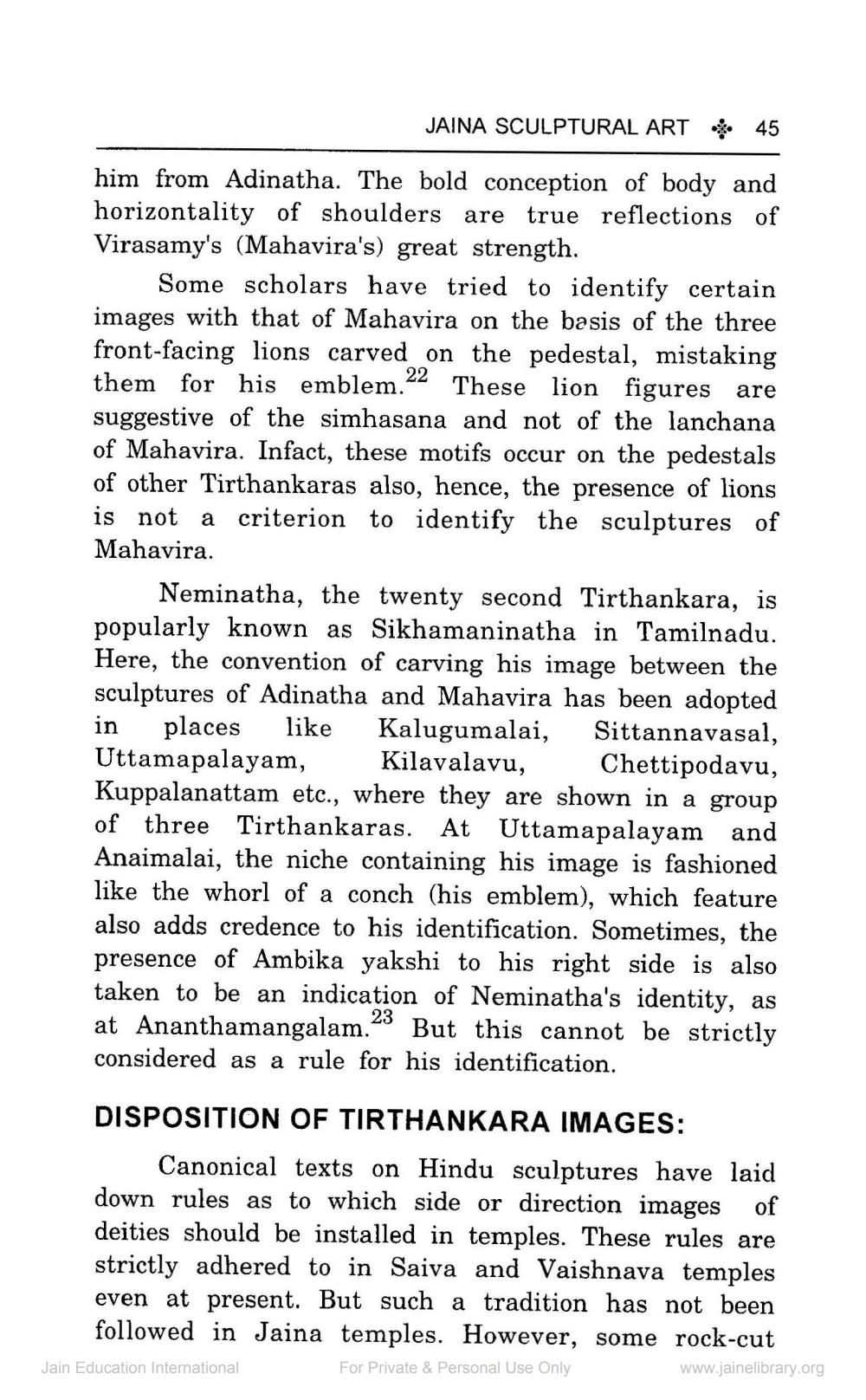________________
JAINA SCULPTURAL ART
45
him from Adinatha. The bold conception of body and horizontality of shoulders are true reflections of Virasamy's (Mahavira's) great strength.
Some scholars have tried to identify certain images with that of Mahavira on the basis of the three front-facing lions carved on the pedestal, mistaking them for his emblem.22 These lion figures are suggestive of the simhasana and not of the lanchana of Mahavira. Infact, these motifs occur on the pedestals of other Tirthankaras also, hence, the presence of lions is not a criterion to identify the sculptures of Mahavira.
Neminatha, the twenty second Tirthankara, is popularly known as Sikhamaninatha in Tamilnadu. Here, the convention of carving his image between the sculptures of Adinatha and Mahavira has been adopted in places like Kalugumalai, Sittannavasal, Uttamapalayam, Kilavalavu, Chettipodavu, Kuppalanattam etc., where they are shown in a group of three Tirthankaras. At Uttamapalayam and Anaimalai, the niche containing his image is fashioned like the whorl of a conch (his emblem), which feature also adds credence to his identification. Sometimes, the presence of Ambika yakshi to his right side is also taken to be an indication of Neminatha's identity, as at Ananthamangalam.23 But this cannot be strictly considered as a rule for his identification.
DISPOSITION OF TIRTHANKARA IMAGES:
Canonical texts on Hindu sculptures have laid down rules as to which side or direction images of deities should be installed in temples. These rules are strictly adhered to in Saiva and Vaishnava temples even at present. But such a tradition has not been
followed in Jaina temples. However, some rock-cut Jain Education International For Private & Personal Use Only
www.jainelibrary.org




